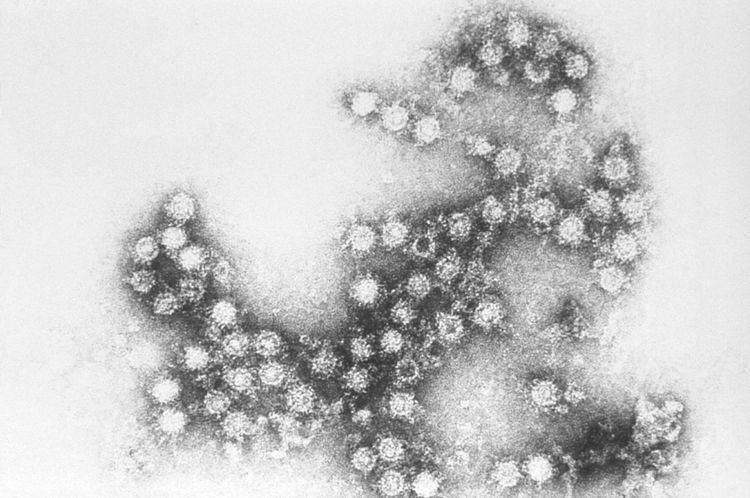Group Group IV ((+)ssRNA) Family Picornaviridae Species Enterovirus B | Order unassigned Genus Enterovirus Scientific name Coxsackie B virus | |
 | ||
Similar Coxsackievirus, Picornavirus, Enterovirus 71, Herpes B virus, Parechovirus | ||
Coxsackie B is a group of six serotypes of Coxsackievirus, a pathogenic enterovirus, that trigger illness ranging from mild gastrointestinal distress to full-fledged pericarditis and myocarditis (Coxsackievirus-induced cardiomyopathy).
Contents
The virus has approximately 7400 base pair.
Geographic distribution
The various members of the Coxsackie B group were discovered almost entirely in the United States, appearing originally in Connecticut, Ohio, New York, and Kentucky, although a sixth member of the group has been found in the Philippines. However, all six serotypes have a global distribution and are a relatively common cause of gastrointestinal upset.
Symptoms
Symptoms of infection with viruses in the Coxsackie B grouping include fever, headache, sore throat, gastrointestinal distress, as well as chest and muscle pain. This presentation is known as pleurodynia or Bornholm disease in many areas. Sufferers of chest pain should see a doctor immediately—in some cases, viruses in the Coxsackie B family progress to myocarditis or pericarditis, which can result in permanent heart damage or death. Coxsackie B virus infection may also induce aseptic meningitis. As a group, they are the most common cause of unexpected sudden death, and may account for up to 50% of such cases. The incubation period for the Coxsackie B viruses ranges from 2 to 6 days, and illness may last for up to two weeks, but may resolve as quickly as two days. Infection usually occurs between the months of June and October in temperate Northern Hemisphere regions.
Diagnosis
Enterovirus infection is diagnosed mainly via serological tests such as ELISA and from cell culture. Because the same level and type of care is given regardless of type of Coxsackie B infection, it is mostly unnecessary for treatment purposes to diagnose which virus is causing the symptoms in question, though it may be epidemiologically useful.
Diabetes
The B4 strain of Coxsackie viruses has been discovered to be a possible cause of Diabetes mellitus type 1. Other research points more broadly to the Coxsackie B virus generally.
Treatment and prevention
As of 2008, there is no well-accepted treatment for the Coxsackie B group of viruses. Palliative care is available, however, and patients suffering chest pain or stiffness of the neck should be examined for signs of cardiac or central nervous system involvement, respectively. Some measure of prevention can usually be achieved by basic sanitation on the part of food-service workers, though the viruses are highly contagious. Care should be taken in washing ones hands and in cleaning the body after swimming. In the event of Coxsackie-induced myocarditis or pericarditis, antiinflammatories can be given to reduce damage to the heart muscle.
